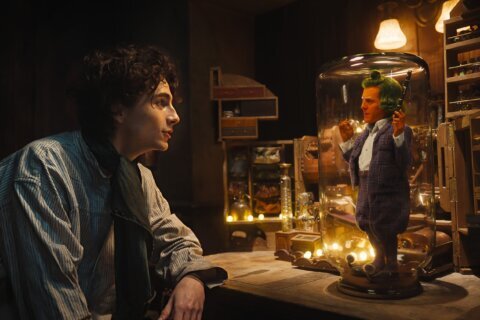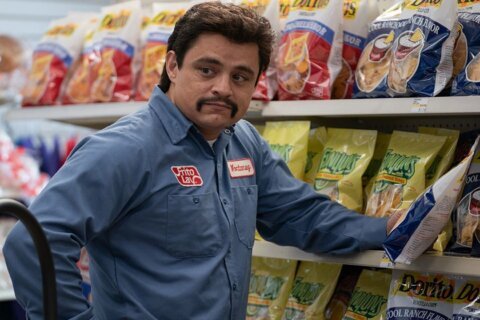WASHINGTON — Cinematic social commentary comes in all sizes.
Sometimes, it arrives as a New Wave art masterpiece such as Alain Resnais’ “Hiroshima Mon Amour” (1959). Other times, it comes as a monster movie blockbuster, such as Ishiro Honda’s “Gojira,” a.k.a. “Godzilla” (1954).
No doubt, the big green lizard remains cinema’s most iconic importer-exporter between U.S. and Japanese culture, fittingly driven by a director named Honda.
While moviegoers in both countries turned out to see the spectacle of a man in a giant rubber suit stomping on miniature Tokyo sets, subconsciously the film worked as a metaphor for the U.S. dropping nuclear bombs on Nagasaki and Hiroshima in 1945 to end World War II. It also spoke to the paranoia of the Cold War 1950s, with the ever-present threat of nuclear annihilation.
In a bizarre way, “Gojira” was a precursor to Stanley Kubrick’s nuclear satire “Dr. Strangelove,” a sort of monster-movie prequel: “Dr. Godzilla: How We Learned to Stop Worrying and Love the Lizard.”
Before we get to our review of the 2014 rendition, it’s important to understand what allowed the 1954 original to transcend its genre and roar into history. No, it’s not the effects, which, while shocking at the time, have clearly dated, just as the effects of this year’s reboot will eventually date. (Advice to filmmakers: if you want to date your movie in 20 years, just fill it with the latest special effects.)
No, the reason “Gojira” stands the test of time is that, beyond its massive destruction, the film offers a rare degree of humanity in three giant lizard steps:
- The 1954 film sparingly shows Godzilla, with a “less is more” approach that Spielberg followed in “Jaws.” When he does attack, we absolutely feel the human toll, panning across the flattened landscape in a chilling reminder of Japan’s real-world history just nine years earlier. Rising through the rubble, we cut to the human drama of a hospital scene, as medics nurse the injured back to health, while TV coverage shows the strength of the Japanese people singing together with hope. (The new film also shows Godzilla sparingly, but has few interesting characters to break up the action. It lacks any human drama after the first 40 minutes, squandering an A-list cast of Bryan Cranston, Juliette Binoche, David Strathairn, Ken Watanabe and Sally Hawkins)
- The 1954 film gives its human characters internal conflict. As Emiko and Ogata urge the scientist Serizawa to kill Godzilla with his “Oxygen Destroyer,” Serizawa delivers a monologue that articulates his moral dilemma: “If my device can serve a good purpose, I would announce it to everyone in the world. But, in its current form, it is just a weapon of horrible destruction. Politicians from around the world will see it. Of course, they’ll want to use it as a weapon. Bombs versus bombs, missiles versus missiles and now a new super weapon to throw upon us all. As a scientist, no, as a human being, I can’t allow that to happen.” (The new film also features Serizawa, but his words of wisdom for the final battle are passive: “Let them fight.”)
- The 1954 film ends with Serizawa sacrificing himself to save mankind, like Randy Quaid in “Independence Day.” The film ends with a wise elder’s call to action for viewers: “If we keep on conducting nuclear tests, another Godzilla might appear somewhere in the world again.” (The new film leaves us scratching our heads trying to determine its M.U.T.O. message. Survival of the fittest? The enemy of my enemy is my friend? CGI creatures mating on the Las Vegas strip are duller than a single fly in a “Breaking Bad” meth lab? Sequels are better than closure?)
These human elements — combined with the popcorn thrills — made “Gojira” a smash hit in Japan and an obvious export to American audiences, whose appetite had been whet by the single greatest monster movie ever made, “King Kong” (1933), which also harnessed its human core in its famous final line: “It wasn’t the airplanes; it was Beauty killed the Beast.”
While “Kong” ranks No. 41 on the American Film Institute’s Top 100 Movies, “Gojira” ranks No. 31 on Empire Magazine’s Top 100 Films of World Cinema. While “Gojira” was released after Ozu’s “Tokyo Story” (1953) and Kurosawa’s “Seven Samurai” (1954) in Japan, it beat both to American theaters. The 1956 U.S. release was renamed “Godzilla: King of the Monsters,” dubbed into English and re-edited to include newly shot scenes with American star Raymond Burr (TV’s “Perry Mason”), who had played Mr. Thorwald in Hitchcock’s “Rear Window” the same year, 1954, that “Gojira” hit Japan.
Since then, Godzilla has seen at least 27 spinoffs, facing everyone from King Kong to Mothra, Hedora to Destroyah. It’s one of those movies you swear you’ve seen even if you’ve never seen it, thanks to countless pop-culture references, in everything from comic books to video games to music.
In 1978, a little rock band from Long Island — Blue Oyster Cult — offered the hit song “Godzilla.”
In 1997, Steven Spielberg’s “The Lost World: Jurassic Park” featured a group of Asian- Americans fleeing a T-Rex in San Diego. One of them screams, “I left Japan to get away from this!”
And in 2002, Mike Myers jumped into a car with Michael Caine and Beyonce in “Austin Powers: Goldmember,” only to get wedged beneath a lizard statue to scare nearby citizens in a spoof of cross-cultural references: “It’s Godzilla!” “No, due to international copyright laws, it is not.”
Flash forward now to 2014, with a horrible 1998 flop thankfully in the rear view mirror, albeit with a Puff Daddy-Jimmy Page riff still on our iPods. Are objects in mirror still closer than they appear? Or does the latest Hollywood remake keep the legacy alive?
See my video review below:
See where this film ranks in Jason’s 2014 Movie Guide. Follow WTOP Film Critic Jason Fraley on Twitter @JFrayWTOP, read his blog The Film Spectrum, listen Friday mornings on 103.5 FM and see a full list of his stories on our “Fraley on Film” page.
Follow @WTOP and WTOP Entertainment on Twitter and WTOP on Facebook.








